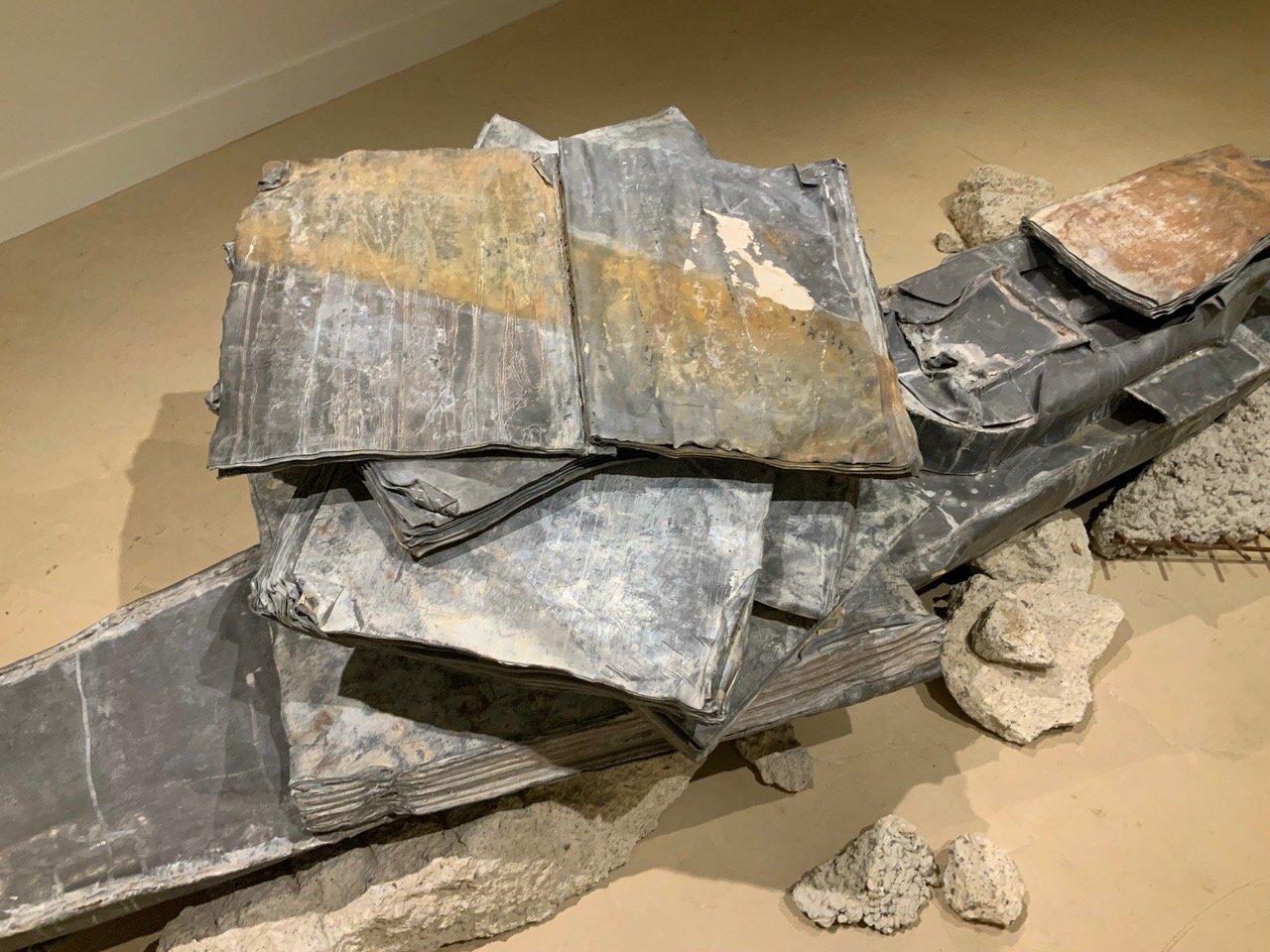Asche für Paul Celan, the monumental sculpture by German-born artist Anselm Kiefer is now on view at the OJAC.
Over a 60-year career, Kiefer has consistently confronted his country’s collective amnesia related to WWII and the Holocaust. As early as the 1960s, Kiefer began challenging this question of collective memory loss by the German people in his art and it remains a central aspect of his work. His earliest works related to the subject were extremely controversial, yet necessary.
Kiefer’s work lends itself to multiple interpretations. Yet it must be noted that the artist’s thoughtfully selected materials and visual elements are often symbolic. The U-boat references the Nazis’ objective to achieve world domination and genetic purity, resulting in its own physical and psychological damage to millions. The lead references the alchemists’ quest to transform the malleable metal into gold—believing gold was a spiritually perfect metal. And finally, the stacked lead books remind us of our often-discarded knowledge of history. All are acts of futility and folly.
Since the work has been on view, I’ve been thinking how often individuals lay exclusive blame and point fingers at other countries or cultures for their misdeeds, cruelty, or unfair laws without considering their own. The United States fought a civil war over 150 years ago and we are still dealing with its impact and history. Some people want to forget it completely and others choose to enshrine certain aspects. Perhaps by acknowledging and questioning issues that we often ignore, like Kiefer, we can find common ground to use history constructively. Otherwise, our conflicts and ignored past begin to stack like inaccessible books, burdening our attempts to move forward.
Patrick Kelly
Director & Curator of Exhibitions

